Many foraging books are what I call “Ohio-centric.” If you live in or near Ohio most North American foraging books are perfect for you: The pictures resemble the plants, the seasonal dates are good, and the environment descriptions suitable. But, the further you are away from Ohio the less accurate those descriptions are about common edibles. The above picture is a good example.
Members of the Brassica group (Mustards to most folks) grow nearly everywhere on earth. Wild Mustard and Wild Radish are no exception. They like cool weather. In Maine where I grew up Wild Mustards were an edible found in late spring and summer. Locally in Florida Wild Mustard and radishes show up around December and are around for a few months. The photo of Wild Radish above was taken October 27 and it’s blossoming. Perhaps winter has come early this year. They are definitely a fall and winter crop here rather than spring and summer. To read more Wild Radish go here, and for Wild Mustard, here.
Another off-season surprise this week involved “the most deadly plant in North America.” Water Hemlock (Cicuta mexicana) is common locally. Usually found in wet or damp locations, it’s usually seen in late spring and summer. Water Hemlock is rather easy to identify. The leaves have veins that terminate mostly between the teeth and the umbrella-shaped blossom is made up of smaller umbrellas. During a foraging class this past weekend we saw foot high water hemlock in a warm shady wet area. It’s the first time I have seen it in a season other than late spring or summer. This is a plant that can kill in just a couple of hours. To read more about water hemlock go here.
Also happily blossoming now is Smartweed, a hot pepper substitute. What makes the plant “hot” I do not know and have never found quality research on that. There are actually two sources of heat on the plant. The leaves have quite a bite. The blossoms are hot and bitter. The blossoms can be white or pink and the plant always grows in damp places if not in water. One odd thing about the species is that it can also be used to catch fish. To read about Smartweed go
This is a reminder that locally acorns are raining locally. I ride over 100 miles a week on bike trails. There one can see dozen of trees dropping acorns. More so the acorns are on a dry, uncluttered surface. You can sweep them up onto a pile and collect them with a minimal amount of work. If you’ve ever wanted to experiment with acorns now is the easy time to find them in good amounts. You can collect this year’s brown and green acorns on the ground if they have no caps. You can also take green acorns off the tree if the cap easily lets them go. To read more about acorns go here.
Upcoming Foraging Classes: All the classes are outside and about four hours long. This usually involves three or four hours of easy walking on paths or grass. All the plants covered at the various locations are on this website.
Sunday, November 6th, Red Bug Slough Preserve, 5200 Beneva Road, Sarasota, FL, 34233. 9 a.m.
Sunday, November 13th, Spruce Creek Park, 6250 Ridgewood Ave. Port Orange, 32127. 9 a.m. This is just south of Daytona Beach. Meet at the pavilion.
Sunday, November 20, John Chestnut County Park: 2200 East Lake Road, Palm Harbor, FL 34685. 9 a.m. Meet at the beginning of the Peggy Park Trail inside John Chestnut Park.
Sunday, November 27th, Blanchard Park, 10501 Jay Blanchard Trail, Orlando, FL 32817. 9 a.m. Meet by the tennis courts next to the YMCA.
Sunday, December 4th, Bayshore Live Oak Park, 2200 East Lake Road, Port Charlotte. 9 a.m. We meet by the parking lot near the intersection with Ganyard Road.
To learn more about the classes go here.
All of Green Deane’s videos are available for free on You Tube. They do have ads on them so every time you watch a Green Deane video I get a quarter of one cent. Four views, one cent. Not exactly a large money-maker but it helps pays for the newsletter. If you want to see the videos without ads and some in slightly better quality you can order the DVD set. It is nine DVDs with 15 videos on each. They make a good Christmas gift. Many people want their own copy of the videos or they have a slow service and its easier to order then to watch them on-line. They make a good gift for that forager you know. Individual DVDs can also be ordered. You can order them by clicking on the button on the top right of this page or you can go here.
Want to identify a plant? Looking for a foraging reference? Do you have a UFO, an Unidentified Flowering Object you want identified? On the Green Deane Forum we chat about foraging all year. And it’s not just about warm-weather plants or just North American flora. Many nations around the world share common weeds so there’s a lot to talk about. There’s also more than weeds. The reference section has information for foraging around the world. There are also articles on food preservation, and forgotten skills from making bows to fermenting food. You can join the forum by clicking on the button on the upper right hand side of this page.
This is Newsletter 231.
If you would like to donate to Eat The Weeds please click here.


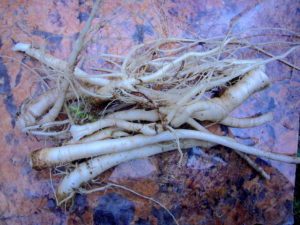
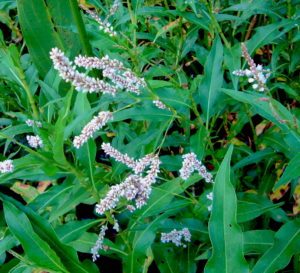
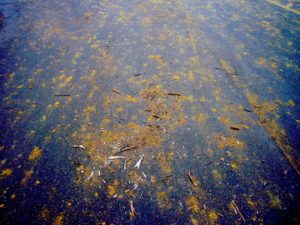
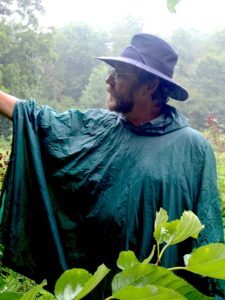
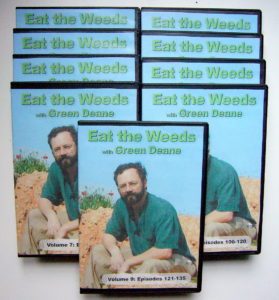
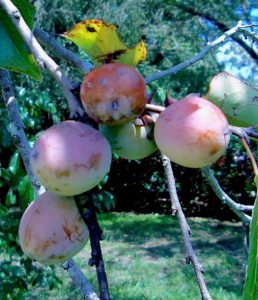

Green…Jus found a baseball size wild lion’s mane shroom in Suwannee cty today..and thanks for articles on honey ringless past yrs..found 3 3gal buckets full about a month ago.
Here in lovely Ireland now for another week – unlucky with no foraging.That is because l’m uder health care under supervision of the kind, quite helpful ,good,and efficient (merciful angles) staff members of Limerick Hospital.
I’d rather send a recipe which may come in context with this issue of Eatthweeds. I refer to: Limerick Post magazine,Sat. 5 Nov.2016.www.limerickpost.ie Please use radish or rather wild radish instead of leeks. It is praised for it becoming more tasty.
Get well soon.
Thank you Green,I hope you and all readers of “Eattheweeds” entertain good health and wealth.